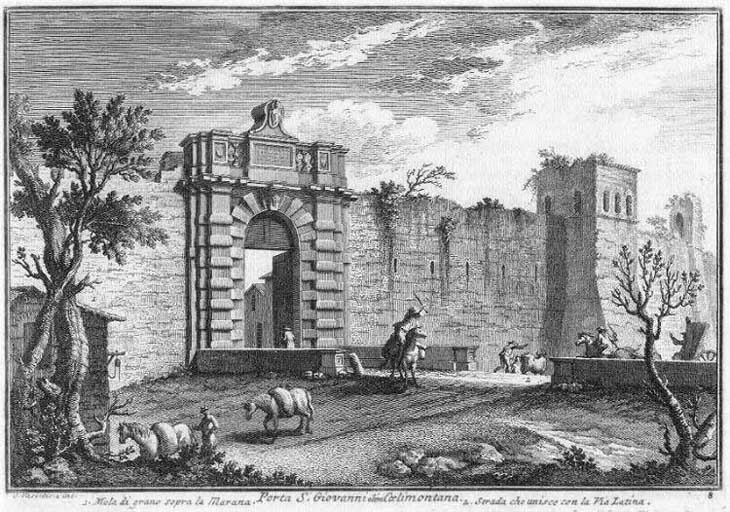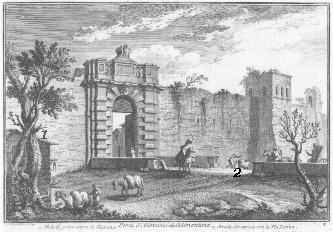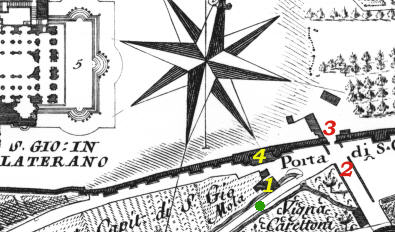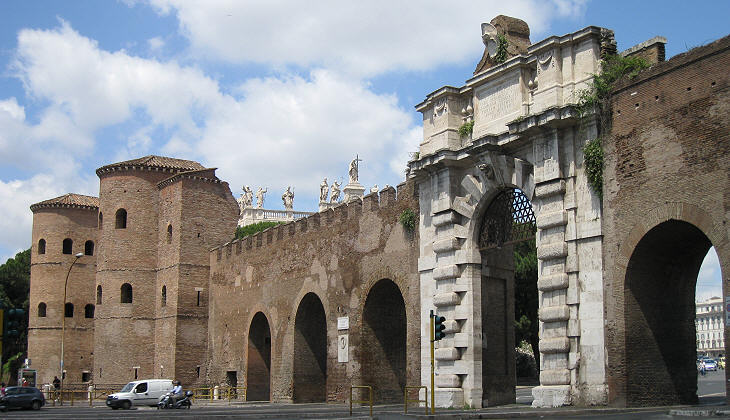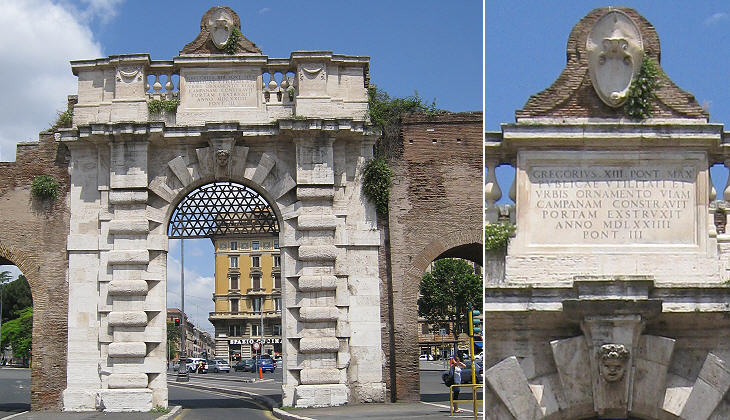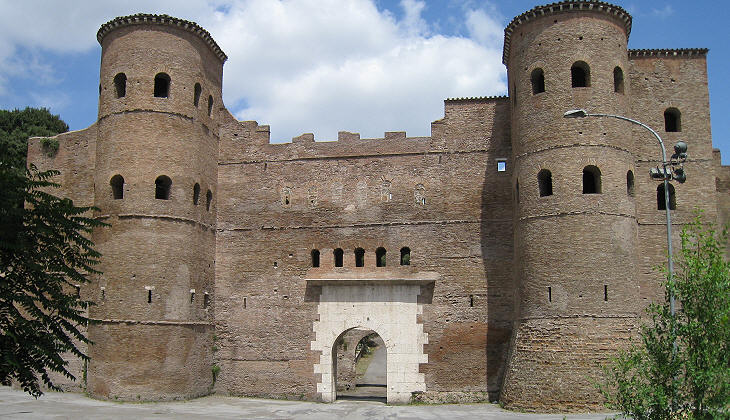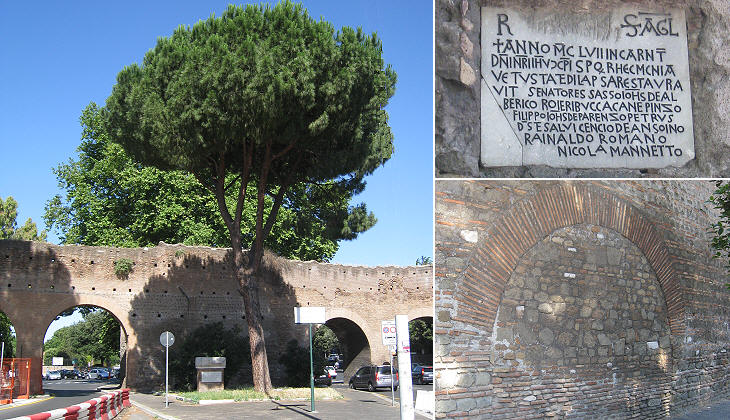  What's New! Detailed Sitemap All images © by Roberto Piperno, owner of the domain. Write to romapip@quipo.it. Text edited by Rosamie Moore. Page revised in June 2009. | Porta S. Giovanni (Book 1) (Map A4) (Day 1) (Rione Monti)
In this page:
The plate shows the external gate built for Pope Gregory XIII by Jacopo del Duca in 1574 near old Porta Asinaria. The design of the gate is similar to the entrance of a villa. The road shown in the plate was called in the past Via Campana (because it was used to reach Campania, the region around Naples), while today it is called Via Appia Nuova. The view is taken from the green dot in the small 1748 map here below. In the description below the plate Vasi made reference to: 1) Mola sulla marana (mill on a small stream of water); 2) Road leading to Via Latina. The small map shows also: 3) Porta S. Giovanni; 4) Porta Asinaria.
Today
Quartiere Appio, one of the most populated new districts of Rome, lies immediately outside Porta S. Giovanni; thus there is always a lot of traffic flowing into and out of Rome. The gate is named after the nearby Basilica di S. Giovanni in Laterano. The Gate
Pope Sixtus V is usually regarded as having been the "town planner" of Papal Rome, however the process of opening new streets and improving communications between Rome and the other towns of the Papal State was started by his predecessor Pope Gregory XIII. Porta Asinaria
When Emperor Aurelianus surrounded Rome with new walls he did not plan for a gate at this location; there was only a posterula, a small opening for the farmers who lived outside the walls. This can explain its name: Asinaria (of the donkeys). It was only after the Lateran became the residence of the popes that a proper gate was built; this was done by Emperor Honorius in the frame of an overall improvement of the fortifications of Rome. Over the centuries it ended up by being at a lower level than the nearby area and for this reason it was eventually closed. Porta Metronia
Roman car drivers who live in Quartiere Appio know very well Porta Metronia, but the arches in the walls which are usually called Porta Metronia were opened in the 1930s. The historical gate, a posterula, is partly below the current ground level and only its arch is visible. One of the inscriptions above the gate has a special importance in shedding some light on a very obscure period of the history of Rome: "Anno MCLVII incarn(a)t(ionis) D(omi)ni n(ost)ri IHV (Iesu) XPI (Christi) S. P. Q. R. hec menia vetustate dilapsa restauravit senatores ..." followed by the names of ten Roman senators. In the middle of the XIIth century the authority of the pope was challenged by the attempts of the Romans to establish the independence of the city from both the Pope and the Emperor. In 1143 the ancient Roman Senate was revived (Renovatio Senatus) and in 1145 the pope (Lucius II) was killed by a stone thrown during a riot. The Senators decided to celebrate the restoration of Porta Metronia by putting an inscription, something which had not been done for centuries. The inscription shows a total lack of skill, although the monuments of Ancient Rome provided plenty of examples of perfectly designed inscriptions. Another interesting aspect is the absence of a reference to the reigning pope (for a similar inscription at Ponte Cestio click here). Excerpts from Giuseppe Vasi 1761 Itinerary related to this page:
Next plate in Book 1: Porta Latina Next step in Day 1 itinerary: S. Croce in Gerusalemme Next step in your tour of Rione Monti: S. Giovanni in Laterano |
